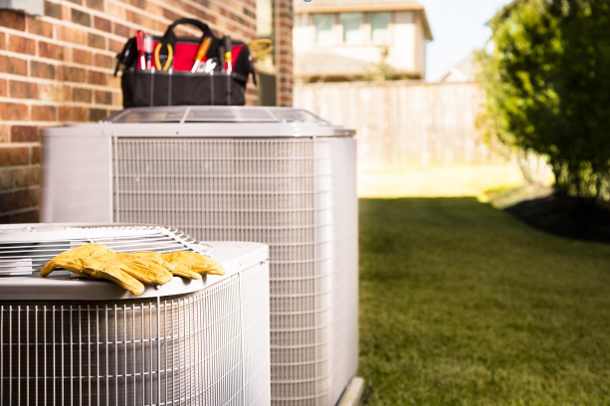Apr 17, 2019

As the weather warms, the need for heating in your home decreases. Pretty soon, you’ll be ready for the air conditioner.
Learning how to keep your HVAC system running smoothly as you switch from heat to AC can help prevent AC issues during the hottest days of summer. It will also help get your heater started quickly again as soon as things cool down.
How to Switch From Heat to Air Conditioning
At the first sign of warm weather, it's tempting to turn off your heater and crank up the AC. However, just moving a switch on your HVAC control panel isn’t enough. Here’s how to ensure you don’t overwhelm your HVAC unit.
Important: Before you begin working on your HVAC system, remember to shut down power to the unit. Cutting the power to your HVAC system prevents the risk of electrocution while performing maintenance. You can shut down the power by locating your HVAC exterior power circuit, usually mounted to the side of your home in a small box, and flipping the switch to the “off” position.
1. Turn off the Heating Unit
The first step in switching from heat to AC is, well, turning off the heat. Most heating systems can be shut down from the thermostat; however, if you have an older furnace with a pilot light, you’ll want to turn off the gas supply as well.
This is an excellent time to check your furnace’s filters, clear debris, and address any outstanding maintenance issues.
2. Prepare the AC
A clean AC unit is a well-performing AC unit. Before you turn on the AC, make sure it's ready to go
- Clean the Ducts and Vents: Consider scheduling a professional duct cleaning before turning on the AC for the summer. Common allergens like dust, pet dander, and mold may have built up during the cold months.
- Remove the AC Unit Cover: Remove any vinyl or plastic air conditioner cover that was used to insulate the unit and protect it from damage throughout the winter.
- Clean the AC: Make sure that your air conditioning operates at peak efficiency all summer long by removing any debris, like leaves or twigs, that’s accumulated on or around your HVAC unit. It’s also essential to clean any dust or dirt that has built up inside vents or other critical cooling parts, like the evaporator coil.
- Inspect the Unit for Damage: Cracks, leaks, and rust can cause serious problems for your HVAC system in the future. Before you turn your AC on, check for any damage or irregularities that might have occurred over the winter. Take care of issues as soon as possible.
HVAC companies are busy in the spring and summer. The sooner you identify any potential problems, the better.
3. Turn on the AC
Once your HVAC unit is ready, you can turn on the air conditioning. However, we strongly recommend you ease into it. Blasting the AC at 60 degrees the first time you turn it on for the season is a recipe for disaster. Cranking the AC can put unnecessary strain on the unit and cause even more damage to issues you may not have noticed during your inspection.
Follow these steps the first time you turn on your AC:
- Set the thermostat just a few degrees below the current temperature of your home to avoid shocking the system.
- Once you’ve turned on the AC, step outside and make sure the outdoor HVAC unit, also known as the condenser, is running. Within a few minutes of turning the air on, you should hear the fan begin to whir.
- When the condenser kicks on, step back inside and check all vents to make sure cool air is flowing throughout your home.
Is It Bad to Switch From Heat to AC Frequently?
You can switch from heat to AC, but to avoid stressing out your system, follow these best practices:
- Let your unit complete its current cycle before switching from AC to heat or vice versa.
- Wait for five minutes before switching from AC to heat to let the refrigerant return to its starting pressure.
- Avoid making drastic temperature changes; raise or lower the temperature a few degrees at a time.
- Remember that your HVAC system may have to work harder when switching frequently.
- Schedule preventive maintenance visits with your local HVAC professional to ensure your system is in proper working order for the seasons ahead.
Get a Full HVAC Inspection With CroppMetcalfe
Make sure your HVAC system is ready to switch from heating to cooling with a CroppMetcalfe maintenance check. Our expert 5-Star technicians will check that your AC is prepared to keep you and your family cool all summer so you can avoid costly repairs on the hottest days of the year.
Don’t wait until it’s too late! Contact us today for a complete HVAC inspection and spend your summer cool and worry-free.